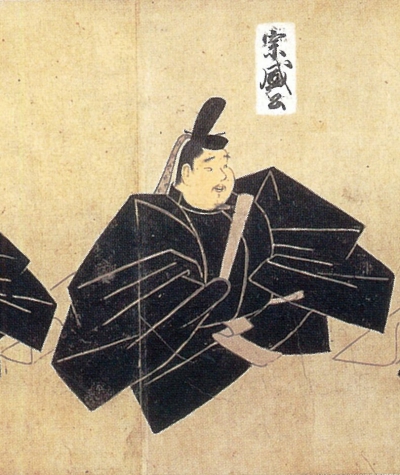The Taira was one of the four most important clans that dominated Japanese politics during the Heian, Kamakura and Muromachi Periods of Japanese history the others being the Fujiwara, the Tachibana, and the Minamoto. The clan is divided into four major groups, named after the emperor they descended from: Kanmu Heishi, Ninmy Heishi, Montoku Heishi, and Kk Heishi.The clan is commonly referred to as Heishi (, "Taira clan") or Heike (, "House of Taira"), using the character's On'yomi hei () for Taira, while shi () means "clan", and ke () is used as a suffix for "extended family".
Taira no Munemori (平 宗盛, 1147 – June 19, 1185) was heir to Taira no Kiyomori, and one of the Taira clan's chief commanders in the Genpei War.As his father Taira no Kiyomori lay on his deathbed, Kiyomori declared, among his last wishes, that all affairs of the clan be placed in Munemori's hands. His eldest son, Shigemori, had already died two years earlier, so Munemori became next in line.In 1183, the rival Minamoto clan gained power, with Minamoto no Yoshinaka and Minamoto no Yukiie besieging the capital city. Following the defection of Emperor Go-Shirakawa to the Minamoto side, Munemori led his forces in escaping the capital city to the west, along with the young Emperor Antoku.: 293–294 In September that same year, the Taira established a temporary Court in Kyūshū, and then Yashima.Munemori took part in nearly every battle of the war, including the Battle of Dan-no-ura in 1185, where he was captured and later executed a few days later. : 303, 314

 English
English  español
español  français
français  português
português  русский
русский  العربية
العربية  简体中文
简体中文 
